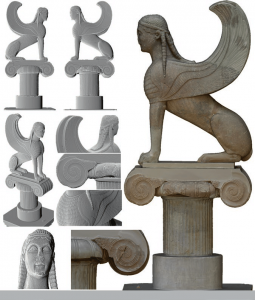It cannot be overstated how much traditional camera technology has shaped our progress and culture. However, while two-dimensional images effectively capture a snapshot as we would see through our eyes an event, place, or object, they do not capture the details of an object in its entirety. We are missing information on what the object would look like if it were rotated around. This information is potentially crucial to archaeological archivists that want to preserve the details of an object in its entirety, with the potential to 3D print and recreate these objects. Our goal is to provide a commercially usable three-dimensional camera to be able to reconstruct an object into a widely used 3D format. In other words, our goal is to be able to accurately map the physical object into a digital three-dimensional representation for the purpose of archeological documentation. Our design goals are to design this device to be able to be used by a non-technical audience: easy to be set up, portable, and most of all, accurate in scanning. Currently, manual 3D modeling by users is time-ineffective, tedious, and costly, as well as prone to errors. Our project will uniquely address these issues in being cost-effective, user-friendly, portable, and accurate.
Use-Case Context
FROM

TO
